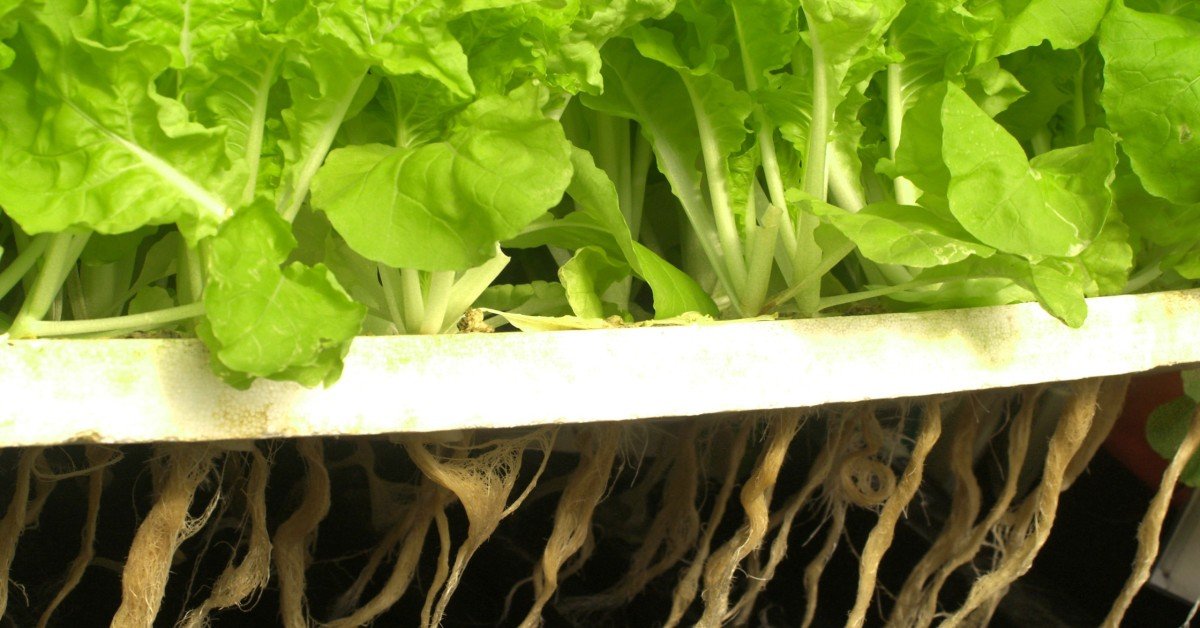When I first started growing indoors, I was drowning in choices. Deep water culture, drip systems, Kratky, and whatnot. Half of it sounded like…school.
But once I figured out how each one actually works, choosing the right setup got a whole lot easier.
If you’re new to hydroponics and just want a simple way to grow fresh food inside, this guide will walk you through the 7 main types of hydroponic systems. You’ll be able to confidently pick the one that fits your space, time, and budget.
Here’s what you’ll learn: what each hydroponic system is, how it works, the pros and cons, and which setup makes the most sense for your situation. If you’d like to learn more about what hydroponics are and how they work, visit USDA’s official website.
What’s the best hydroponic system for indoor growing?
It depends on your space, budget, and time. Beginners often do well with Kratky or Deep Water Culture (DWC) because they’re simple and low-maintenance. For larger setups or faster growth, drip systems and nutrient film technique (NFT) are better picks.
7 Indoor Hydroponic Systems Explained (With Pros and Cons)
There’s no one-size-fits-all hydro system. Each one has trade-offs. Some are dead simple and quiet. Others give you fast growth but need timers, air pumps, or more babysitting. Here’s what each type looks like in plain English:
1. Kratky Method
This is as simple as hydro gets. You don’t need pumps, timers, or moving parts.
Just set your plant in a net cup, fill the container with nutrient-rich water, and leave an air gap for the roots to breathe.
I’ve used old food-safe buckets for this and it works just fine for lettuce and basil.
Good for: Absolute beginners, leafy greens, and herbs
What’s needed: Container, net pots, nutrient solution
Pros:
- No electricity or moving parts
- Super cheap to set up
- Great for low-light apartments
- Easy to maintain
Cons:
- Only works for short grow cycles
- Nutrient levels drop as water depletes
- Not great for fruiting crops
2. Deep Water Culture (DWC)
Roots stay submerged in nutrient solution while an air stone bubbles oxygen to keep them alive. I run a 4-site DWC bucket system with spinach and kale during the cold season. You’ll need a reliable air pump though. Because no oxygen, no roots.
Good for: Small indoor setups, lettuce, greens, beginners with air pumps
It needs: Air pump, air stone, container, and net cups
Pros:
- Fast growth
- Easy to scale
- Very beginner-friendly
Cons:
- Needs electricity
- Root rot risk if pump fails
- Water temps can get tricky indoors
3. Wick System
This one pulls nutrient water from a bottom tank into the growing medium using capillary action. No pumps. No noise. It’s the slow cooker of hydroponics. Works best with absorbent media like coco coir or perlite mixes.
Good for: herbs, leafy greens, low-maintenance growers
It needs: A reservoir, cotton or nylon wicks, and a growing tray
Pros:
- No moving parts
- Quiet and low-maintenance
- Cheap and DIY-friendly
Cons:
- Slower growth
- Can dry out or clog
- Not ideal for fruiting or heavy feeders
4. Ebb and Flow (Flood and Drain)
This setup floods the plant roots with nutrients on a schedule, then drains it back down. It’s best suited for plants that don’t want “wet feet” all the time. Plants like peppers or even strawberries.
You’ll need a timer and some plumbing, but the control is nice.
Good for: Growers with a bit of time and tech confidence
Needs: Timer, submersible pump, flood tray, reservoir
Pros:
- Supports larger plants
- Good oxygen to root ratio
- Can use multiple types of media like hydroton, rockwool, etc.
Cons:
- Timer and pump setup can be finicky
- Floods can fail if timer or pump breaks
- A bit bulky for small spaces
5. Nutrient Film Technique (NFT)
NFT systems run a thin stream of nutrient solution over the roots. The plants sit in net pots above the stream so the roots get just what they need. I’ve seen some great home setups using rain gutters and PVC pipe.
Good for: experienced growers, fast-growing greens
Needs: slightly sloped channel, pump, reservoir
Pros:
- Continuous feed for fast growth
- Uses less water and nutrients
- Efficient for long rows of greens
Cons:
- Needs steady flow; if the pump fails, roots dry fast
- Not ideal for heavy fruiting crops
- Setup takes precision (slope, flow rate, etc.)
6. Drip System
This one’s like garden irrigation—nutrients drip right onto the base of each plant. It works great for tomatoes, cucumbers, or anything with a thirst. You’ll need a bit more gear, but it pays off with flexibility.
Good for: Folks who want control, mixed crop types
Needs: Pump, tubing, emitters, and timer
Pros:
- Works for almost any plant
- Easy to automate
- Great water control
Cons:
- Emitters can clog
- Needs routine cleaning
- More parts = more things to troubleshoot
7. Aeroponics
Instead of soaking roots in water, this system mists them with nutrients. Growth can be crazy fast—but so can problems if things break. I wouldn’t recommend this for beginners unless you’re up for tinkering.
Good for: advanced growers, tech lovers, experimenters
What’s required: misting system, timer, enclosed root zone
Pros:
- Fastest root oxygenation = fastest growth
- Very efficient with water
- High yields with less media
Cons:
- Complex to build and maintain
- High failure risk if misting stops
- Expensive gear
How to Choose the Right System (for You)
You don’t need a fancy setup to grow good food. What matters is picking a system that fits your space, your schedule, and your comfort level.
Here’s how to think it through:
1. If you’re just getting started:
Go with Kratky or DWC. Because they’re simple, cheap, and don’t need timers or complicated plumbing. You can grow lettuce, basil, kale, or spinach in a tote with a few holes cut in the lid.
2. If you want to grow larger or fruiting plants (like tomatoes or peppers):
Try a drip system or ebb and flow. Why? Because these indoor systems give the roots enough air and food while handling bigger plants. You’ll need a pump and timer, but once it’s dialed in, they’re quite reliable.
3. If you’re low on time or don’t want to fuss with tech:
A wick system or Kratky can work fine. It’s set it and forget it, for the most part. Just top off your water now and then. It’s not the fastest growth, but it’s peaceful, and that sure means something.
4. Like building things or already enjoy gardening gadgets?
Consider NFT or even aeroponics. These can give great results, especially with leafy crops. But they take more work, and if something breaks, your plants can crash fast.
5. If you’re tight on space (like an apartment or small home):
Stick with Kratky, DWC, or wick. You can run these in 5-gallon buckets, storage totes, or even mason jars. No need to fill your living room with gear.
What to Use First And What to Save for Later
Some systems look great on paper but end up being more hassle than they’re worth, especially for beginners.
Take NFT, for example. It’s a popular choice in commercial setups, but it can be a pain to get right at home.
If the slope or flow rate is even a little off, roots can dry out fast. Same goes for aeroponics.It sounds impressive, but when that mister fails (and it probably will), your plants are toast in hours.
For most folks starting out, Kratky and DWC are the easiest wins. They’re simple to build, forgiving, and work well for greens and herbs. No complicated timers. No need to watch over them like a hawk.
If time, space, or tech skills are tight, stay away from complex options. Start with what’s manageable, then scale up when you’re ready.
This keeps it reader-focused, not personal, and reflects the idea of starting simple and avoiding early frustration.
Summary
You don’t need a high-tech setup to grow good food indoors. Start with a system that fits your life, not just your wishlist.
For most beginners, that means something simple like Kratky or DWC. As you get the hang of it, you can try more advanced setups like drip or ebb and flow.
The goal isn’t to build a perfect system, one that actually works. The goal’s to grow something you can eat and enjoy the process while you’re at it.
Ready? Pick one system and try it with a single crop. Lettuce or basil is a great place to start. You’ll learn more by doing than from any guide.

Patrick M. holds a degree in horticulture and has over 10 years of experience as a senior production manager at Syngenta. He also completed advanced training in plant breeding at Texas A\&M. His work in Kenya, Norway, Sweden, and Denmark brings a wealth of practical insight to his writing on IndoorGrowLife.com. Patrick is passionate about helping people grow fresh food indoors using hydroponic systems.

